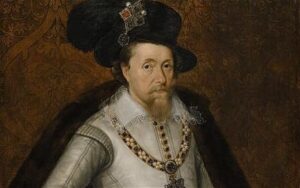Below is a detailed biography of John Marston, an English dramatist of the 16th and 17th centuries. He was a satirist of the Shakespearean era. His work is seen to have evolved from the late Elizabethan era into the early Jacobean era. However, his career has been a short one compared to other famous prose writers of his time.
The Early Life of John Marston
John Marston was born in Oxfordshire in the year 1576. He was the son of a lawyer in the Middle High Temple. He went to Brasenose College, Oxford in 1592. He studied arts from the same college and was living in the Middle High Temple at the time. He always had a call for poetry and playwriting and spent a lot of his time reading during his childhood.

His father opposed his career in literature. At the age of 29, he married Mary Wilkes, a daughter of a Reverand from the chaplain of King James.
The career of John Marston
Marston began with satirical writing with genres of erotic epyllion. He imitated a copy of ‘Satires of Juvenal’ which were written in the 2nd century. He published it in 1598 calling it ‘The Metamorphosis of Pigmalion’s Image and Certain Satyres’. In the same year, he published another satire called Scourge of Villanie.
His writing is specifically known to be obscure in nature and which is what he believed it should be like as satires are inspired by ancient Greek Satire plays. Most of the writers of his decade believed so. His style was so rough that at a point it could be declared unintelligent. Some of William Shakespeare’s work including ‘Thersiers and Lago’ seems to have been inspired by Marstons work, especially the Scourge of Villanie.
The Scourge awakened an outrage among many people leading it to be banned by the Bishop of London and the Archbishop of Canterbury.
Playwriting Career
In the year 1599, Marston met Philip Henslowe, a theatrical entrepreneur, and worked with him as a playwright. It is believed that he chose his career path due to the ban impost on his satirist work by the Bishops. His first play was Histiriomastix that was performed by the students at the Middle Temple where he studied. There has also said to have been quite a controversial feud among Marston, Jonson and Dekker. It was called the War of the Theatres.
Later in the year 1600, he wrote ‘Antonio and Mellida’ followed by ‘Antonio’s revenge’ in 1601. In spite of having many feuds with people in his own industry, he had quite a prosperous career.
He was also a shareholder in a production house called Children of Blackfriars by the year 1603. Then he continued to write plays under the same brand. He wrote as well as promoted a play called ‘The Malcontent’ in the year 1603. It was a satirical tragic comedy and was among one of his most famous works.
John Marstons wrote a beautiful play on lust and hypocrisy called ‘The Dutch Courtesan’ in the following year. He is also said to have collaborated with the famous George Chapman. Chapman was a dramatist, satirical writer, and translator. Together they wrote, ‘Eastward Ho’ which was taken in offence by the Scottish people and therefore, it is said, that they were arrested, however, never imprisoned.
A similar incident took place with one of his plays offending King James, however, he seemed to manage to get out of it. Later in 1607, he came up with a less dramatic work for the Earl of Huntingdon, it was called ‘The Entertainment at Ashby’. With this, his career with playwriting started to deplete. He even started selling the shares of his company.
It seems that he offended some French courtiers at some point that brought in many setbacks.
Later Life of John Marstons
During his final days, Marstons took up philosophy. He moved into the house of his father in law in 1609. He became a reader at Oxford and went on to become a deacon. On the 24th of December in the same year, he was ordained as a priest. He amused everyone that followed his career. It took him 7 years to be assigned a Church and was finally assigned as Parish Priest at Christ Church in Hampshire.
At a young age of 57, he died on the 24th of June in the year 1634. He was buried at Middle Temple Church in London.